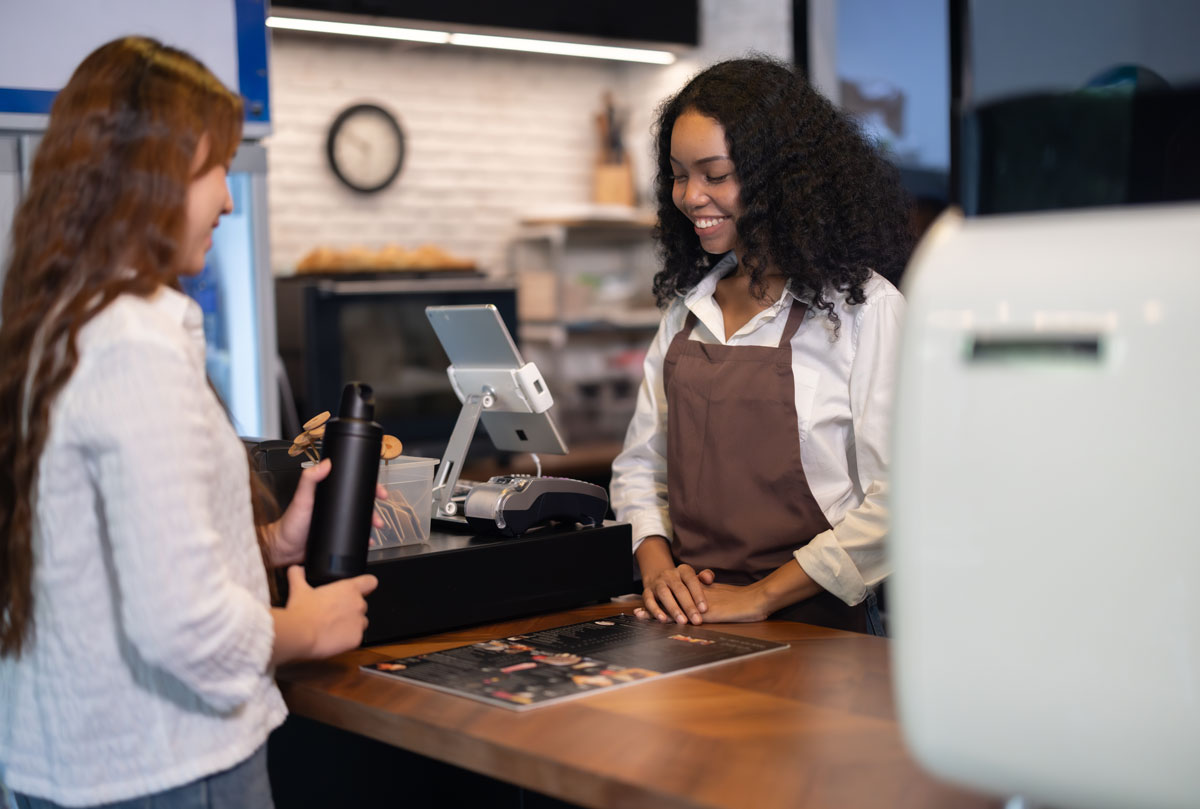In the 2000s, many of us attached miniature loyalty cards to our keychains or stuffed the full-sized versions in our wallets. Loyalty programs have come a long way since then. Today, we simply punch our phone number into a keypad or scan a QR code to instantly access our loyalty accounts and redeem rewards with ease. Companies use “members only” appeal to gain valuable insights into customer behavior by offering rewards for a variety of desired actions, from social media shout outs to exclusive access to events and early product releases.
While loyalty programs once were used to reward customers for spending money at a retailer, today they have evolved to become powerful tools that help businesses grow. That said, loyalty programs have gotten a facelift to appeal to today’s consumer. Conversion specialist Invesp reports that 49% of consumers spend more after joining a loyalty program. The longer the relationship lasts, the more consumers spend. Repeat customers, on average, spend 67% more over three years than they did in the first six months after purchasing from a brand.

A Winning Strategy
Modern loyalty programs are a win-win and prove to be a powerful consumer-centric retail strategy. A PwC survey found that 53% of consumers choose a business to patronize by considering value, and 30% specifically cite benefits, rewards, and privileges as a factor. On average, a customer in the United States belongs to 17 loyalty programs, eight of which they are active.
According to The Robin Report, investing in a loyalty program is one of the best marketing investments a brand can make.
“The benefits for retailers are substantial: Loyalty customers shop more, spend more, and stay longer. They’re more likely to engage – rating products and advocating for the brand, online and IRL. Moreover, in the current climate of iOS privacy protections and increased privacy legislation, these programs have become the richest source of permission-based consumer data collection, which can then be used to fine-tune program features and communications for maximum impact. Lastly, companies with high loyalty and/or dependable subscriptions get higher valuations on Wall Street.”
Another benefit of loyalty programs for retailers is the influence loyalty programs have on loyalty member purchasing decisions— a whopping 81% of consumers say a loyalty program membership influences their likelihood of making a purchase. Not to mention 59% of loyalty members are more likely to choose the member brand over a competitor.
According to McKinsey, customers who join loyalty programs are 64% more likely to purchase from that company multiple times, 50% more likely to recommend it to a friend, and 31% more likely to pay more to shop with that brand.
A Hidden Data Goldmine
Loyalty programs present a valuable opportunity for businesses to collect first-party data while offering rewards and incentives to their customers. When executed well, data culled from loyalty programs can help brands increase customer lifetime value, drive repeat purchases, and create brand advocates.
Loyalty programs’ influence spans across multiple channels, including online stores, brick-and-mortar locations, mobile apps, and social media platforms. This omni-channel presence provides customers with seamless interactions and more opportunities to earn and redeem rewards.
Just look to beauty retailer Ulta, which identifies loyalty members’ needs and desires through its membership program, across multiple channels. With more than 42 million active members, Ulta revamped its program in 2024 to further enhance the member experience with special birthday offers. Ulta members earn points on purchases, can earn bigger benefits the more they spend by achieving Platinum or Diamond status, and can use their Ulta Beauty Rewards credit cards to earn even more points. Points can be redeemed for purchases and salon services.

Modern Loyalty Programs and Blockchain Technology
Retail loyalty programs are facing a challenge: keeping customers engaged with programs that often feel siloed and offer limited reward options. Blockchain technology offers a potential solution that could revolutionize how brands design and manage loyalty programs.
Imagine a world where loyalty points aren’t just for your store, but can be earned and redeemed across a network of participating retailers. This is the power of blockchain. It allows you to create secure, digital tokens that represent loyalty points. These tokens are:
- Decentralized: No single entity controls the data, reducing operational costs and increasing transparency for both you and brands and shoppers.
- Immutable: Once a transaction is recorded on the blockchain, it cannot be altered, eliminating fraud concerns.
- Interoperable: Customers can use their tokens at any store within the network, unlocking greater value and flexibility for them. This can incentivize them to shop at a wider range of stores, potentially introducing them to new products and brands.
Beyond the customer benefits, blockchain offers significant advantages for retailers:
- Increased engagement: By offering a more versatile rewards system, you’re more likely to keep customers actively participating in your program, leading to repeat purchases.
- Reduced program management costs: The decentralized nature of blockchain can streamline program administration and potentially reduce maintenance fees.
- Valuable customer insights: With customer consent, blockchain allows you to gather valuable data on spending habits across the network, providing insights into broader consumer trends and informing more targeted marketing strategies.
While still in its infancy, blockchain has the potential to be a game-changer for loyalty programs. By offering increased value and flexibility for both brands and customers, blockchain can help you create a more engaging and rewarding loyalty program experience. This can ultimately lead to increased customer retention, brand loyalty, and revenue growth.

Unlocking Stronger Customer Relationships
Loyalty programs are a powerful tool to differentiate and drive repeat business. By aligning rewards with customer preferences, brands can create a seamless and rewarding shopping journey that keeps them coming back for more. Studies show that loyalty program members spend up to 67% more over three years than non-members.




